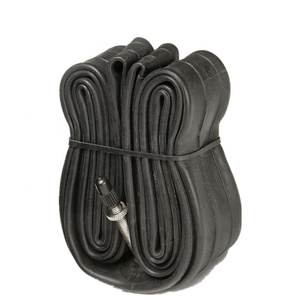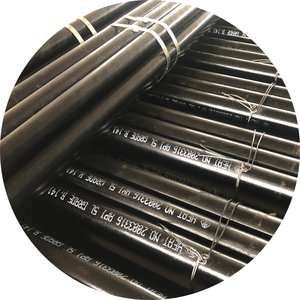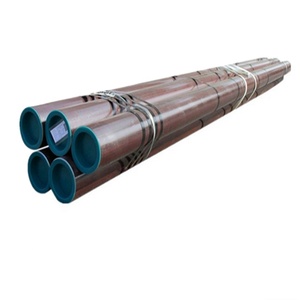(200089 products available)




































The x tube is a metal tube known as a precision tube. It is used in different industries for applications that need specific dimensions and high strength. X tubes can be welded or drawn to meet the required specifications. They come in various sizes and shapes, including round, square, and rectangular tubes.
X tubes are popular because they can withstand pressure and force. They are used in the construction of buildings, automobiles, furniture, and machinery. These tubes have many applications, and their popularity continues to grow because they are durable and reliable.
X tubes can be classified into different types based on application, shape, and manufacturing process. They include:
Aluminum tubes have different applications in construction and manufacturing, so the functions and features mentioned below can help meet the requirements of the buyers.
Lightweight
X tubes are lightweight, making them suitable for applications where weight is a concern. For example, in the aerospace industry, aluminum is commonly used in aircraft components. Additionally, the lightweight nature of aluminum tubes reduces transportation and installation costs.
Strength
Aluminum is known for its strength-to-weight ratio. This means that aluminum can support a considerable amount of weight and is not heavy. This feature enables the x tube to be used in applications that require tubes to carry loads. For example, in the construction industry, aluminum tubes are used in structural applications such as window frames, and doors and in the manufacturing industry they are used in scaffolding and ladders.
Corrosion Resistance
X tubes are exposed to different environments that may cause them to rust or corrode. However, aluminum has the ability to resist corrosion which helps in extending the tube's lifespan. This feature also reduces maintenance and replacement costs. The corrosion resistance of aluminum allows the tubes to be used in marine environments, and construction applications such as hand railings and pipelines.
Versatility
The aluminum tubes can be configured to meet different applications and requirements. These include round, square, and rectangular shapes. The versatility of the tube allows it to be used in different industries such as automotive, aerospace, construction and manufacturing industries.
Thermal Conductivity
The aluminum tube can allow heat to pass through it easily. This is important in applications where temperature control is required. For example, in HVAC systems and heat exchangers. Thermal conductivity reduces the weight of the component in electronic designs and accelerates heat dissipation in LED lighting.
Aesthetic Appeal
The aluminum tube can be finished in different ways, for example, anodizing and powder coating. The finishing improves the appearance and function of the tube by increasing its corrosion resistance. The aesthetic appeal of the aluminum tube makes it be used in applications that require visual impact such as architecture and interior design.
Recyclable
X tubes can be recycled and this helps in conserving raw materials and reducing energy costs. The aluminum tube is 100% recyclable and the recycled tube is as good as the primary tube. Recycling aluminum tubes are used to manufacture new products and create employment opportunities.
There are countless applications for X-shaped tubes in various industries. Their strength, stability, and lightweight features make them ideal for providing support and structure in construction, automotive, and other applications. Here are some common usage scenarios:
Construction and Building
X tubes are widely used in the construction industry. They are used to construct buildings, bridges, and other infrastructure projects. Their strength and stability make them support loads and withstand environmental conditions. X tubes are also used in the construction of scaffolding to support workers and materials during the construction process.
Automotive Industry
These tubes are used in the chassis and frame of vehicles. Their strength and lightweight features allow them to construct cars, trucks, and other vehicles. This helps to enhance the performance and fuel efficiency of the vehicles. X tubes are also used in the construction of roll cages for racing cars.
Aerospace Industry
X tubes are used in the construction of aircraft and spacecraft. Their lightweight and high-strength features make them ideal for building wings, fuselage, and other structural components. These tubes are also used in the construction of satellite and missile systems.
Energy Sector
These tubes are used in the construction of wind turbines. Their strength and stability features allow them to build wind turbine towers, turbine blades, and other components. X tubes are also used in the construction of solar panel frames and supports. Their resistance to corrosion is important in the coastal and marine environments.
Furniture and Interior Design
X-shaped tubes are popular in the construction of modern furniture. They are used in the construction of tables, chairs, and shelves. Their aesthetic appeal and structural integrity make them popular in interior design and architecture.
Sports and Recreation
X tubes are used in the construction of sporting equipment such as bicycles, tennis rackets, and sports arenas. Their lightweight features enable athletes and sports teams to enhance their performance. These tubes are also used in the construction of playground equipment and outdoor shelters.
Marine Industry
X tubes are used to construct boats and ships. Their resistance to corrosion and ability to support large loads make them ideal for this application. These tubes are also used in the construction of marine infrastructure such as piers and docks.
When buying stainless steel exhaust tubing, there are some important things to consider. Here are some of them:
Steel Grade
The grade of steel determines the durability and corrosion resistance of the exhaust tube. Stainless steel 304 is popular because it's a good balance between price and resistance. But stainless steel 409 is cheaper and widely used in the automotive industry.
Tube diameter and thickness
Consider the diameter of the tube and wall thickness. A thicker wall provides more strength and durability, but it also adds weight. A good balance must be found between weight and thickness when choosing the right tube.
Pipe Bends and Elbows
Bends and elbows help direct exhaust flow. Look for high-quality mandrel bends for minimal flow restriction. The angle and radius of the bend should match the exhaust system requirements.
Quality of welds
The weld quality is crucial for tube durability. Look for vendors offering continuous TIG welded tubes. They provide a smooth interior surface and high strength.
OEM Compatibility
If the exhaust tube replaces an existing one, ensure it is compatible with the original equipment manufacturer (OEM) parts. Check the diameter, bends, and fittings to ensure a proper connection.
Installation requirements
Consider the installation requirements, such as welding or clamping. Welding provides a stronger connection, while clamping allows for easier removal. Choose the installation method that suits the customer's needs.
Vendor Reputation
Choose a reputable vendor with experience in exhaust system components. Look for reviews, testimonials, and samples of previous work. A good vendor provides high-quality products and excellent customer service.
Q1: What are the common sizes of X tubes?
A1: X tubes come in various sizes. Common diameters range from 1 inch to 12 inches. The most popular sizes are 2, 3, 4, 5, 6, and 8 inches. In terms of lengths, X tubes are usually 6, 10, 12, 20, 21, 24, 40, or custom lengths. For structural steel applications, 30 ft is a standard length.
Q2: What is the difference between X tubes and round tubes?
A2: Both X and round tubes are used in different applications. However, their shape gives each tube distinct characteristics. X tubes have a higher load-bearing capacity than round tubes because of their shape. The shape of X tubes also makes them more stable when used as beams. On the other hand, round tubes have better resistance to wind and water because of their smooth surface. Round tubes are also more aesthetically pleasing since they have a sleek and smooth design.
Q3: What are the finishing options for X tubes?
A3: Like other metal tubes, X tubes have different finishes. This not only makes the tubes visually appealing but also protects them from rusting. Common finishing options include galvanized, powder coating, black oil, and mill finish. Galvanized and powder coating finishes are popular anti-rust options.
Q4: What are the popular grades of steel used to make X tubes?
A4: X tubes can be made from different grades of steel. The most popular ones are S235, S275, and S355. These grades of steel are rolled according to European standards. Grade 350 steel is an Australian standard. It is used to produce high-strength and tough X42 steel tubes. Other grades of steel include API 5L, ASTM A500, A53, and E460.
Q5: What are the common applications of X tubes?
A5: X tubes are versatile and can be used in different applications. These applications include construction, agriculture, mining, manufacturing, transportation, and energy industries. Common applications include frames, structural support, scaffolding, machinery, trailers, and pipelines.